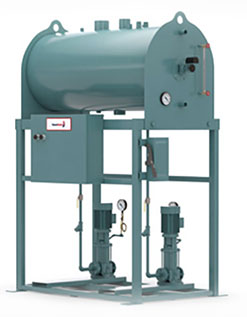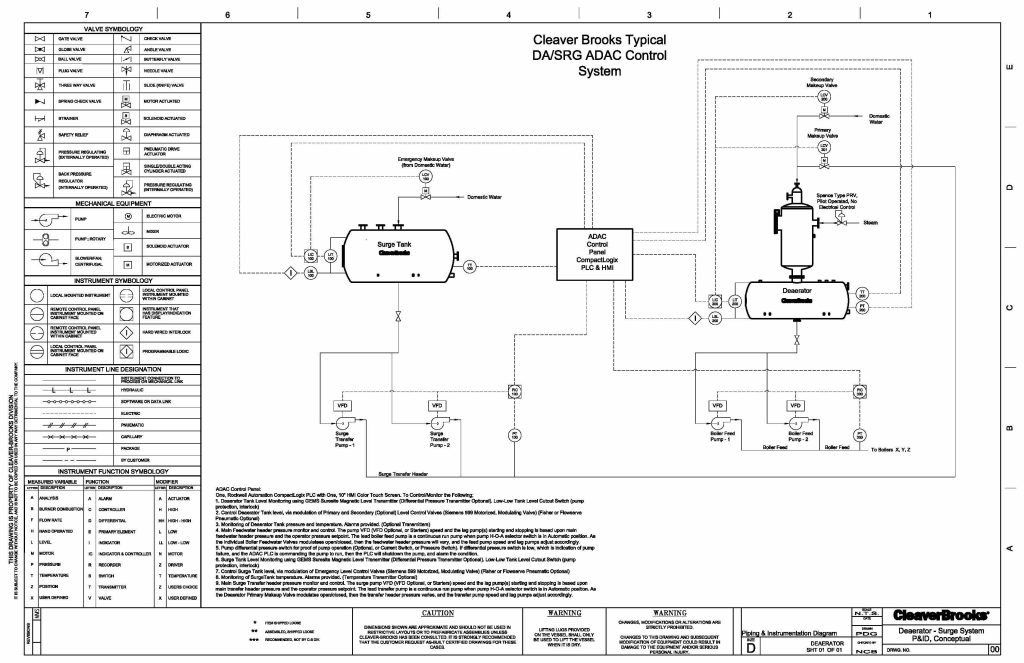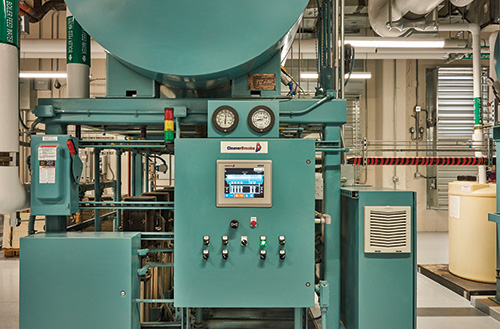We have covered Keeping Deaerators Effective and Reliable and Deaerators, the Why and How, but let’s get into a 2-tank boiler feed scenario using a Deaerator and Surge Tank system to minimize makeup water in your system.
A surge tank is an extension to a steam system designed to accommodate pressure changes and neutralize peaks and drops in pressure to prevent system failures and energy waste.
Condensate return volume is often unpredictable, a surge tank provides a means to collect intermittent condensate returns and supply water at a relatively constant volume while limiting discharge to drain. This greatly reduces energy usage by reusing already treated and heated water.

Surge Tank

SprayMaster-Type Deaerator
Considerations for a Surge-Transfer System
The surge tank will collect both pumped and gravity condensate returns and will boost pressure for delivery to the deaerator. To determine whether surge/transfer system is the right scenario for your application, consider the following:
- When using a pressurized deaerator operating at 5 psig, gravity returns may not have enough static pressure to overcome the deaerator operating pressure and the drop across the spray valves. Approximately 10 psig is needed at the inlet to the deaerator tank to overcome these pressure drops. An atmospheric surge tank system can accept these returns and pump them to the deaerator.
- A deaerator, like any mechanical device, operates best under steady-state conditions. Installations with a high condensate return rate can overload the deaerator with water if multiple condensate pumps start simultaneously. The result is that the incoming condensate will be heated and deaerated, and then leave through the overflow to the drain, taking valuable BTUs with it! A surge system allows the condensate to be collected in a large tank and fed to the deaerator at a rate determined by the deaerator level control valve. If the surge tank overflows, the loss is minimized because no steam has been used to heat and deaerate this water.
- Make-up water use is minimized by giving preference to condensate returns. The make-up valve will open only during periods of low condensate return, when the surge tank reaches a low level.
- The surge tank operates at atmospheric pressure, resulting in lower temperatures in the tank. This allows the tank to be mounted at a lower elevation above the transfer pumps, which facilitates the piping of low head return lines.

- The surge system can be piped so that during deaerator shutdown and servicing, the boiler feed pumps can draw water from the surge tank. This minimizes plant downtime. View a typical Deaerator/Surge System P&ID for reference.
The percentage of condensate returns and the number of condensate pumps in the plant are the major factors in determining when a surge system is necessary.
There are many factors that go into configuring the best boiler feed system scenario. Let Energy Control help evaluate your system to determine the more efficient, energy-saving solution. Contact us today.

